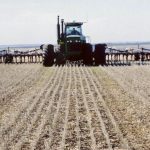Controlled traffic farming has yet to catch on in a big way in Western Canada, but the extreme conditions over the past two years have shown its worth to two long-term practitioners on opposite ends of the Prairies. “I grew canola and barley last year and we had 28-bushel canola on four and a half





